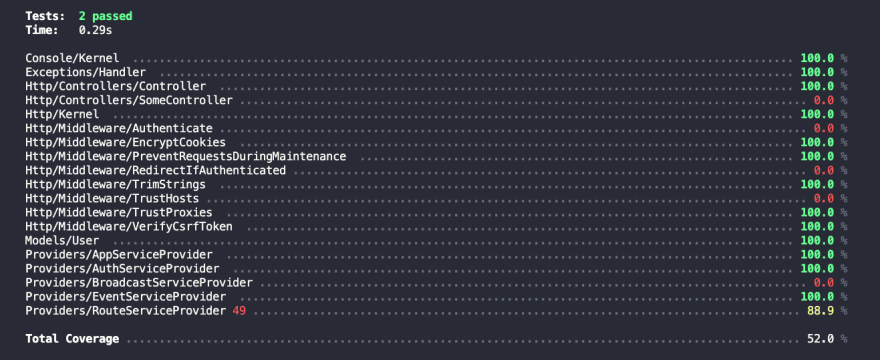Laravel 9 has a new feature added by Nuno Maduro to get code coverage for specific Laravel projects, the command is php artisan test --coverage, in this article I am going to explain how to set xdebug locally in a MacOS environment.
Check that you have installed Xdebug
In your local environment you can run this command:
php -v
You should be able to see the php version, but also more data like xdebug version installed locally, like this:
If you have not installed XDEBUG here you would find an article to install xdebug
Get PHP.ini file location
Then to check the php.ini file location (it changes from different php versions) run this command:
php --ini
It should return in the second line the php.ini file location.
You can use a code editor like vscode or use nano or other editor to update the file, here I would add an example with both for php 8.0.x as it is required for Laravel 9:
Set Xdebug mode
Grab the file location and edit the php.ini file:
// Command to open files with vscode... it is easier
code /usr/local/etc/php/8.0/php.ini
// or
nano /usr/local/etc/php/8.0/php.ini
Then add at the very bottom this line:
xdebug.mode=develop,debug,coverage
Now you are able to run:
php artisan test --coverage
and it should work and return something like this:
Excluding Framework files
The test --coverage command would return a percentage of coverage, it is evaluating a lot of files, some of them not fully covered, so you can exclude this file to just test your own code implementations in phpunit.xml file, like this:
<coverage processUncoveredFiles="true">
<include>
<directory suffix=".php">./app</directory>
</include>
<exclude>
<directory suffix=".php">./app/Macros</directory>
<file>./app/Http/Middleware/Authenticate.php</file>
<file>./app/Http/Middleware/RedirectIfAuthenticated.php</file>
<file>./app/Http/Middleware/TrustHosts.php</file>
<file>./app/Http/Middleware/TrustProxies.php</file>
<file>./app/Providers/BroadcastServiceProvider.php</file>
<file>./app/Providers/HorizonServiceProvider.php</file>
<file>./app/Providers/TelescopeServiceProvider.php</file>
</exclude>
</coverage>
You can customize even more the coverage tags, but at this point your code coverage is higher.
That is all, thanks for reading the article, and may the code coverage be with you.









Oldest comments (1)
Thank you very much! With this article, I was able to configure Xdebug coverage in just a few minutes.